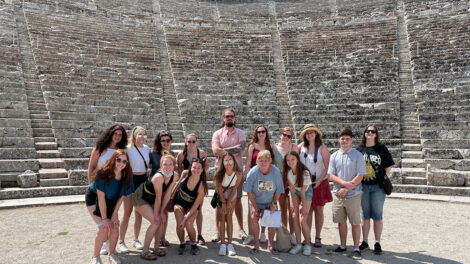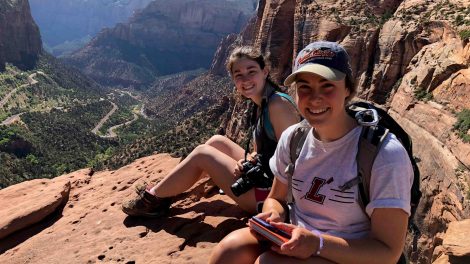Experiencing ‘All the Amazing Things the World Has to Offer’
By Shannon Sigafoos
It’s 4 a.m. in early October in Guanacaste, Costa Rica, and a group of seven study abroad students is waking up before dawn to head to Ostional National Wildlife Refuge, a protected 200-meter strip of beach, in time to watch the sunrise. The ride there is bumpy, and the group—bleary-eyed from working late on assignments the night before—is trying to remain awake. There is a certain excitement in the air, however, as the students trundle toward their destination.
A half-hour later, under a pre-dawn sky streaked with red and yellow, the group is experiencing the remarkable phenomenon known as “arribada,” the mass arrival and nesting of thousands of sea turtles. Wide-eyed, they watch one turtle lay eggs and then cover them before heading back to the ocean. They also watch newly hatched baby turtles struggling to make their way out of the sand and to the water. Knowing that only 1% of these turtles will survive and that the local community comes together to protect them during this time, the students are getting a crash course in the biological life cycle and in conservation efforts.
“It was beautiful and exhilarating, and a good example of my attempt to have students not only study important issues (in this case, the fragile equilibrium between tourism development and conservation), but also to be able to experience them as well,” says Daniel Quirós, associate professor of Spanish and faculty lead for the Lafayette in Costa Rica (Universidad Veritas) program, who has his students keep a journal during the 16-week course. “As a community (the small town of Ostional), they’ve developed a fund. (They are allowed to collect turtle eggs and sell them during the first day of the arribada.) They make a small amount of money from this that they use to clean the beach, guard the beach, and protect the turtles. In the 40 years they’ve been at work, the turtle population has grown by more than 12 times.”
Quirós’ interdisciplinary course explores the idea of Costa Rican exceptionalism in three main areas: environmental sustainability, socioeconomic development, and immigration. These issues are explored through the lens of culture and cultural production, with a strong complement from interdisciplinary texts, lectures, excursions, and experiential learning. Students visit places discussed in class and receive lectures from professionals in the field. In the case of the wildlife refuge visit, students were profoundly moved by the firsthand experience.
“The whole process was so precious. Being able to see the turtles give birth, bury their nest, and make their way back to the ocean all felt so wholesome,” Imane Halal ’23 wrote about the outing. “It’s so great being able to experience nature and all the amazing things that the world has to offer.”
“It was honestly a beautiful thing to see nature in action: the arrival, the birth, the departure, and the interaction between the other animals in the ecosystem. It’s honestly something I never thought I would get to experience,” Jeffrey Ramírez ’23 echoed in his journal. “I am truly grateful that I had the opportunity to get this once-in-a-lifetime experience.”
Along with the Costa Rica course (which is the only Lafayette-affiliated program running this term), the Study Abroad program, through affiliated partners, has seen students travel to seven other destinations this semester, including Seoul, Korea; Copenhagen, Denmark; Stockholm, Sweden; Oxford, England; Quito, Ecuador; Panama City, Panama; and Barcelona, Spain. Affiliated programs available to Lafayette students can be found through the Study Abroad program search tool.
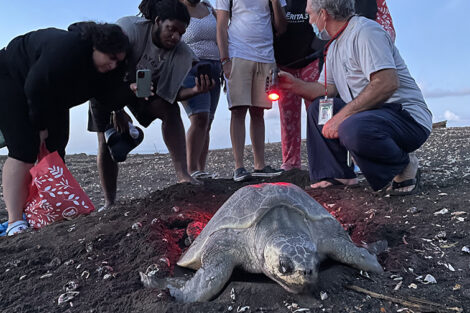
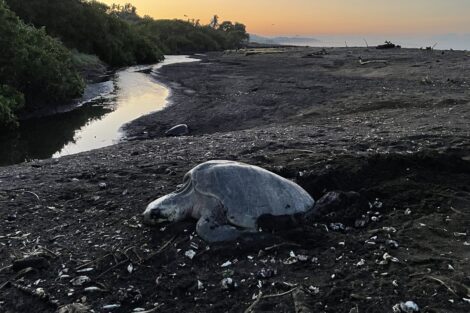
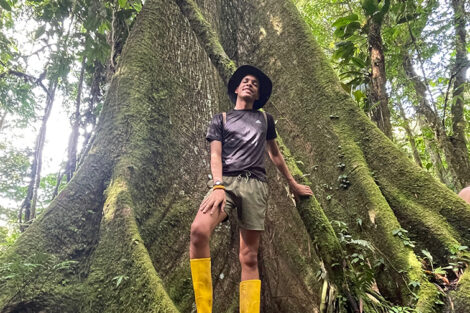
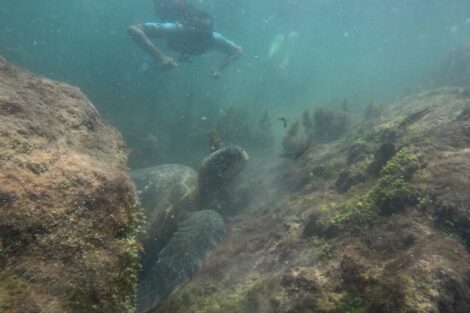
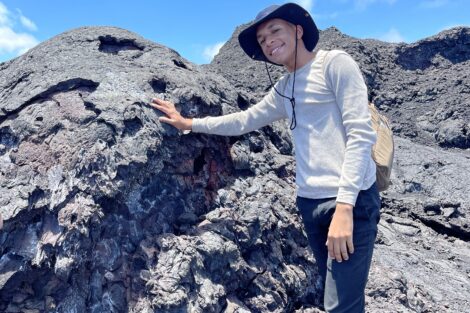
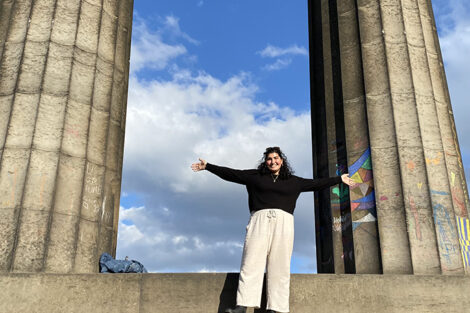
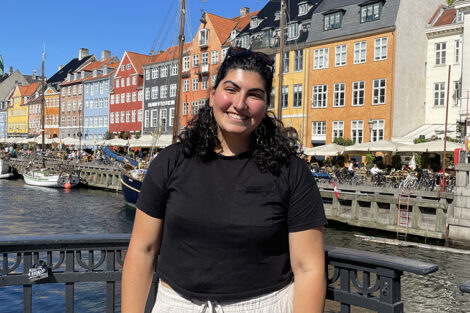
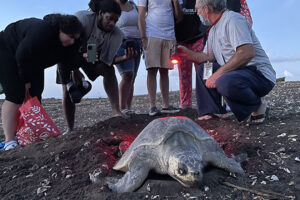
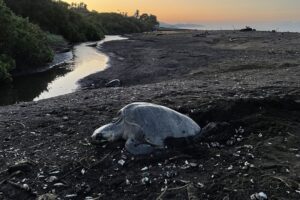
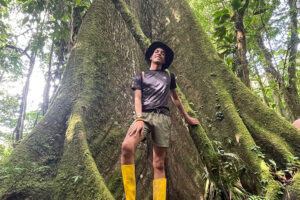
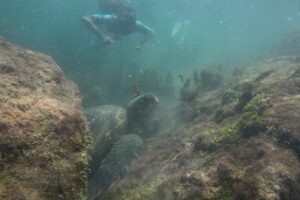
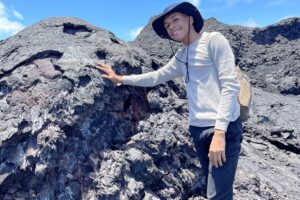
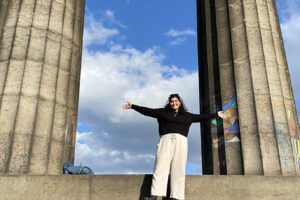
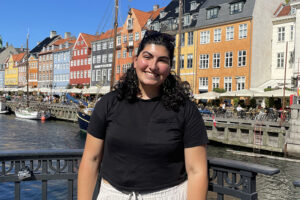
“I’ve had the chance to take Spanish and Kichwa (an indigenous language) classes which have been very interesting and help me understand Ecuadorian culture. I have learned a lot about Ecuador’s diverse population and their different ways of life,” shared Darien Price ’22, who is spending the semester enrolled in the SIT Study Abroad Ecuador: Development, Politics, and Languages program. “I have explored Quito, where I visited markets and the center square. I also went up the Quito cable car to almost 13,000 feet above sea level, and visited the equator, as well. We went to the Upper Amazon Basin, where we learned about Indigenous communities and medicinal plants. We had the opportunity to take a medicinal bath, as well as make traditional Indigenous pottery. The most incredible trip so far has been to the Galápagos islands, where I was able to snorkel with animals such as sea lions and penguins. I also was able to climb up to a volcano and learn about the geology that formed the islands, as well as the struggle between opening the islands to tourism while protecting its unique natural beauty.
“DIS is a really cool program because it integrates travel into the studies, both locally and on a larger scale. The Danish educational style is much more experiential, and there’s a large emphasis on engaging with course material outside the classroom. Thus, there’s no classes on Wednesdays. Instead, we go on field studies around the city,” wrote Alexandra Kasparian ’22, who is enrolled in SIT Study Abroad in Denmark. “For example, I went to the Copenhagen Zoo and a forest for mushroom foraging for my Conservation Biology course. My Human Health and Disease class took a three-day trip to Aarhus (another city in Denmark) last month, and we’re getting ready to go to Vienna for a week. This way, we get to learn about our course material (in my case, health care) in different contexts. I love having the opportunity to engage with different medical practitioners, health care systems, and cultures. I also think this experience will be really valuable for my career in health care, as I’m learning about how different health care systems work.”
Students abroad also shared that in their host countries and classrooms, any necessary COVID-19 regulations are being followed, and that they feel safe and comfortable in their surrounding environments. Some seniors also have discovered a kinship with other students who found themselves in a semester of travel that was originally delayed due to the pandemic.
“While studying abroad senior year had originally felt like a weird idea, I have met a lot of other seniors here who fell into similar circumstances because of COVID. I was initially supposed to study abroad in Vienna last spring, so it’s a little funny that my long trip with my class is in Vienna; everything kind of came full circle in that way,” said Kasparian. “I was also able to connect with Rebecca Wilbur ’22, and we traveled to Stockholm together—a little bit of Lafayette in Europe.”
Explore the World
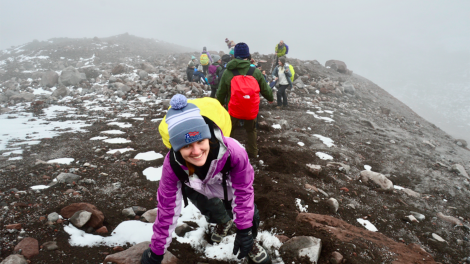
Studying Abroad
Studying abroad is an adventure that brings participants face to face with new perspectives and cultures. Students have the option to join programs led by Lafayette faculty or apply to approved programs sponsored by other institutions.
